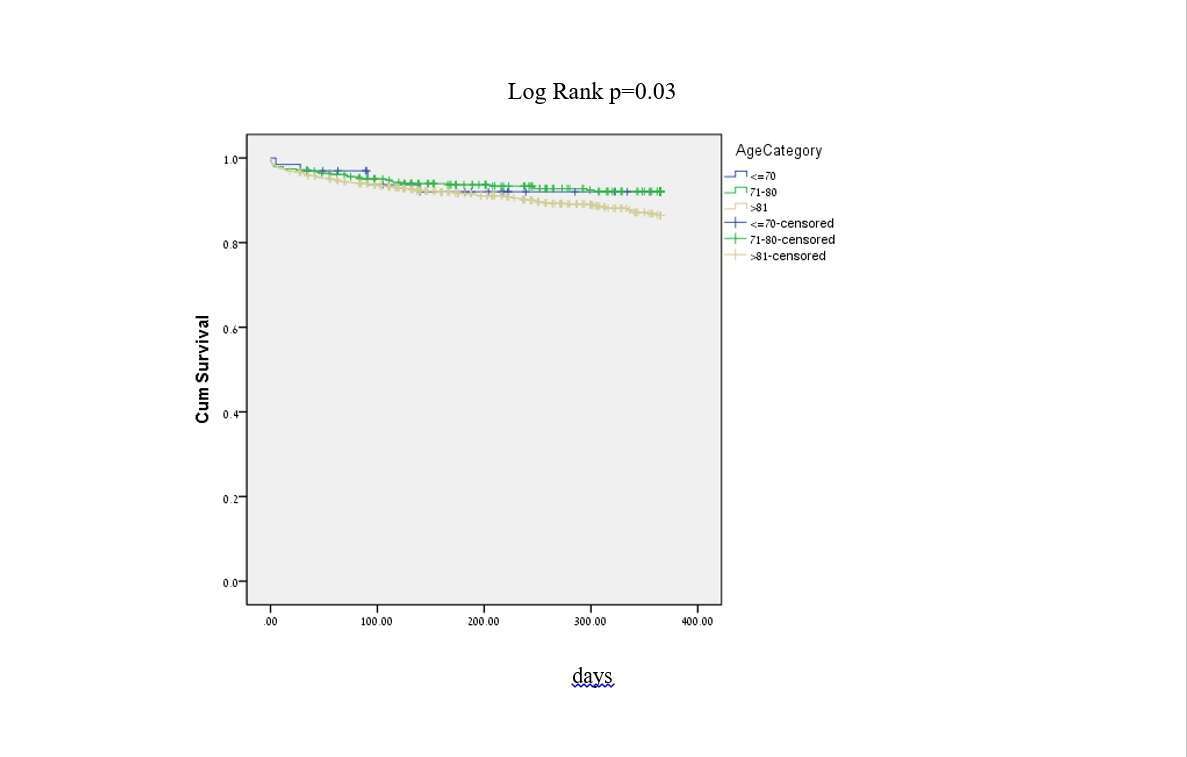
Transcatheter Aortic Valve Replacement in Patients Under the Age of 70
2Sackler School of Medicine, Tel Aviv University, Tel Aviv
3Cardiology, Rabin Medical Center, Petach Tikva
4Heart Institute, Tel Aviv Medical Center, Tel Aviv
Background: Transcatheter aortic valve replacement (TAVI) has been used with increasing frequency for the treatment of severe aortic stenosis in patients who have high or prohibitive risks with conventional surgical AVR. The pivotal PARTNER trial included patients with a median age of 83.1 in the TAVI group. Little is known regarding the prognosis and complications of younger patients undergoing TAVI.
Methods: The Israeli TAVI registry was designed as an all-comers registry for patients undergoing the procedure from 2008 to 2014 at the Tel-Aviv, Rabin or Sheba Medical Centers. Baseline characteristics and acute complications from 2008 to 2014 were analyzed in all patients who underwent TAVI. In this study, patients were divided into 3 age groups: patients aged 70 years and below, patients aged 71-80 years and patients over 81 years.
Results: 1,324 patients underwent TAVI in Israel from 2008 to 2014. Baseline characteristics analysis demonstrated significantly higher rate of comorbidities in the younger age group (i.e. CVA [24.6% Vs. 13.8%], DM [43.9% Vs. 30.8%], and PVD [21.2% Vs 10.7%]). The acute complications rate did not differ between groups except for significantly higher rate of valve migration.
The 1 year mortality rate of patients aged <70y, 71-80y and >80y was 7.6%, 7.5% and 12.6% respectively (p=0.01). Multivariate Cox regression analysis adjusted to multiple risk factors for death (i.e. frailty, atrial fibrillation, COPD, PVD, CKD and DM) revealed that the risk of mortality in patients
Conclusions: Younger patients undergoing TAVI have significantly higher rates of comorbidities and risk factors that probably led to the decision to perform TAVI rather than SAVR. Nevertheless, the mortality rate in this unique group is lower or equal to older patients undergoing TAVI.

Powered by Eventact EMS